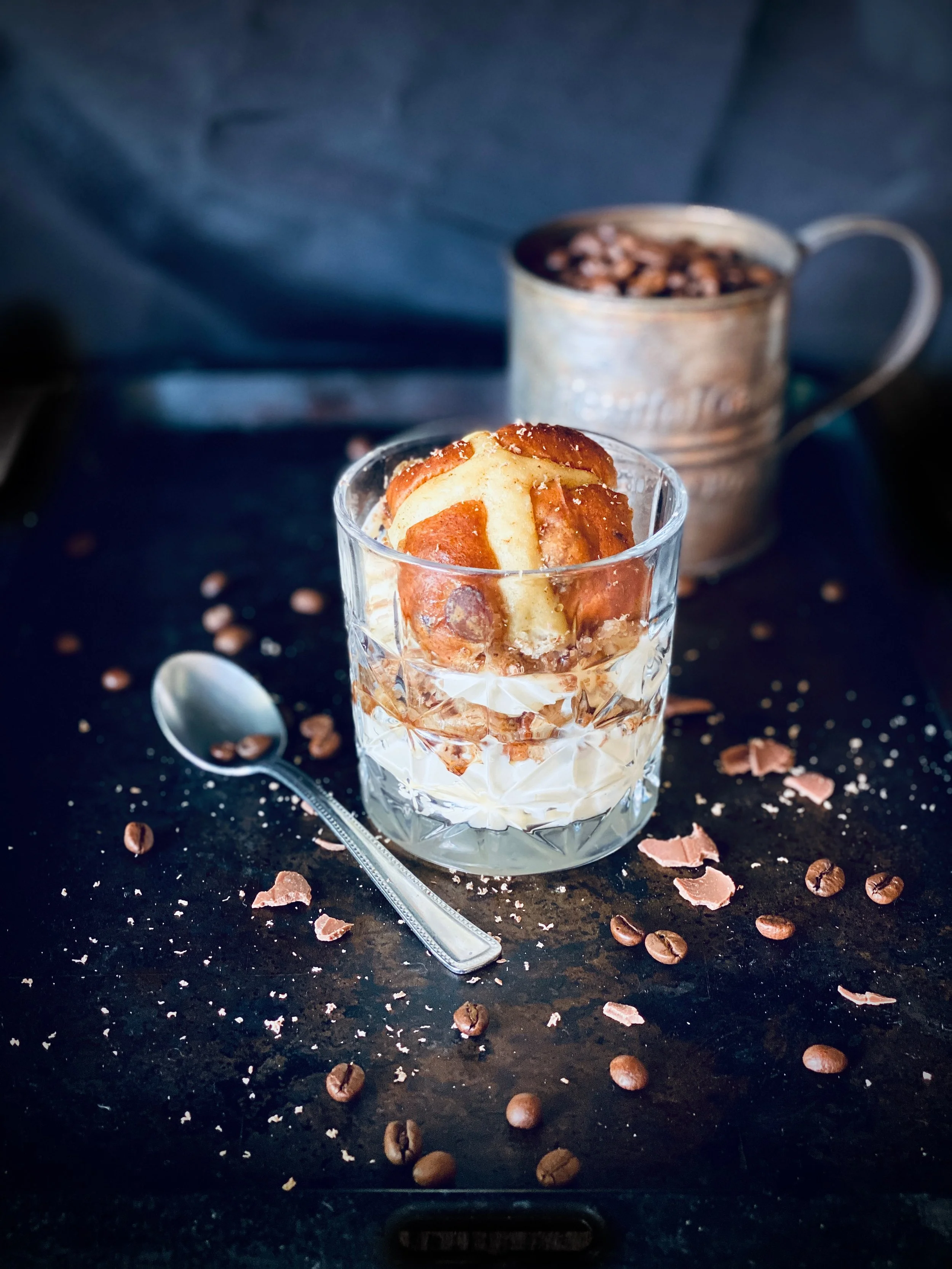Another #7daysofbread suggestion from @bakingequalslove
This is ideal for an Easter dessert. It offers you a delicious way to use up your hot cross buns and spare Easter eggs:
1 hot cross bun
~30mL espresso / strong coffee
~30mL Marsala / coffee favoured liqueur
1 tsp sugar
1/2 cup mascarpone
1/2 cup whipped cream
1 TBSP icing sugar
Chocolate Easter egg to grate
* Fold whipped cream, mascarpone together with icing sugar.
* Add sugar to hot coffee and let cool. Add Marsala and stir.
* Cut hot cross bun in half.
* In a glass, layer:
Mascarpone mixture, grated chocolate egg, bottom half of hot cross bun, a couple of Tablespoons of coffee mixture, the rest of the mascarpone mixture, more grated chocolate, the top of the hot cross bun dunked in coffee mixture
* Grated chocolate to finish
For the reel version, go to our Instagram April ‘23 page:
https://www.instagram.com/reel/Cq111DCpglU/?utm_source=ig_web_copy_link
📷💭🙏 For more beautiful photos and food inspo, check out: Nessie Sharpe @bakingequalslove
For other #7daysofbread ideas, have a hunt around for the hashtag on our site or Instagram. We’ll keep adding to it!












